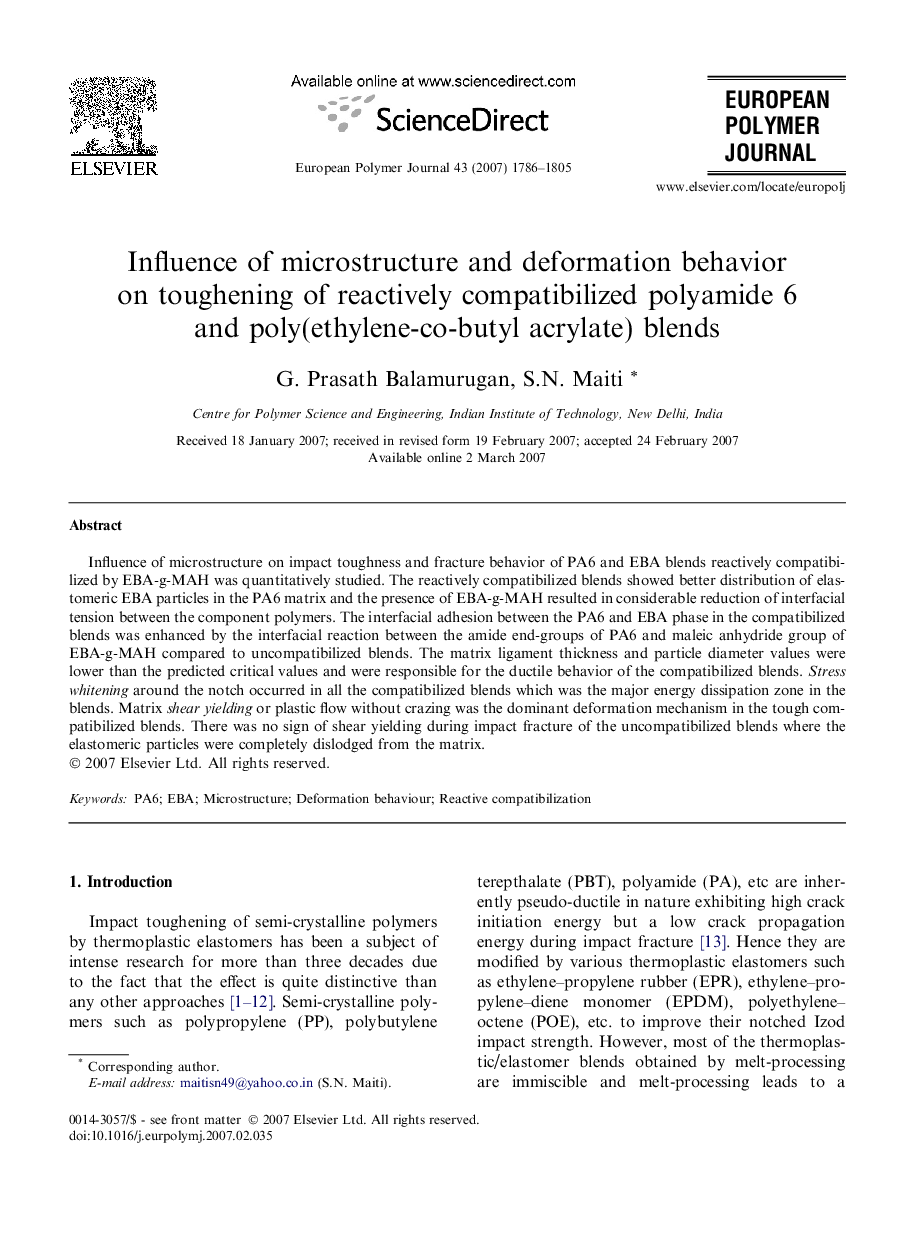| Article ID | Journal | Published Year | Pages | File Type |
|---|---|---|---|---|
| 1403581 | European Polymer Journal | 2007 | 20 Pages |
Influence of microstructure on impact toughness and fracture behavior of PA6 and EBA blends reactively compatibilized by EBA-g-MAH was quantitatively studied. The reactively compatibilized blends showed better distribution of elastomeric EBA particles in the PA6 matrix and the presence of EBA-g-MAH resulted in considerable reduction of interfacial tension between the component polymers. The interfacial adhesion between the PA6 and EBA phase in the compatibilized blends was enhanced by the interfacial reaction between the amide end-groups of PA6 and maleic anhydride group of EBA-g-MAH compared to uncompatibilized blends. The matrix ligament thickness and particle diameter values were lower than the predicted critical values and were responsible for the ductile behavior of the compatibilized blends. Stress whitening around the notch occurred in all the compatibilized blends which was the major energy dissipation zone in the blends. Matrix shear yielding or plastic flow without crazing was the dominant deformation mechanism in the tough compatibilized blends. There was no sign of shear yielding during impact fracture of the uncompatibilized blends where the elastomeric particles were completely dislodged from the matrix.
